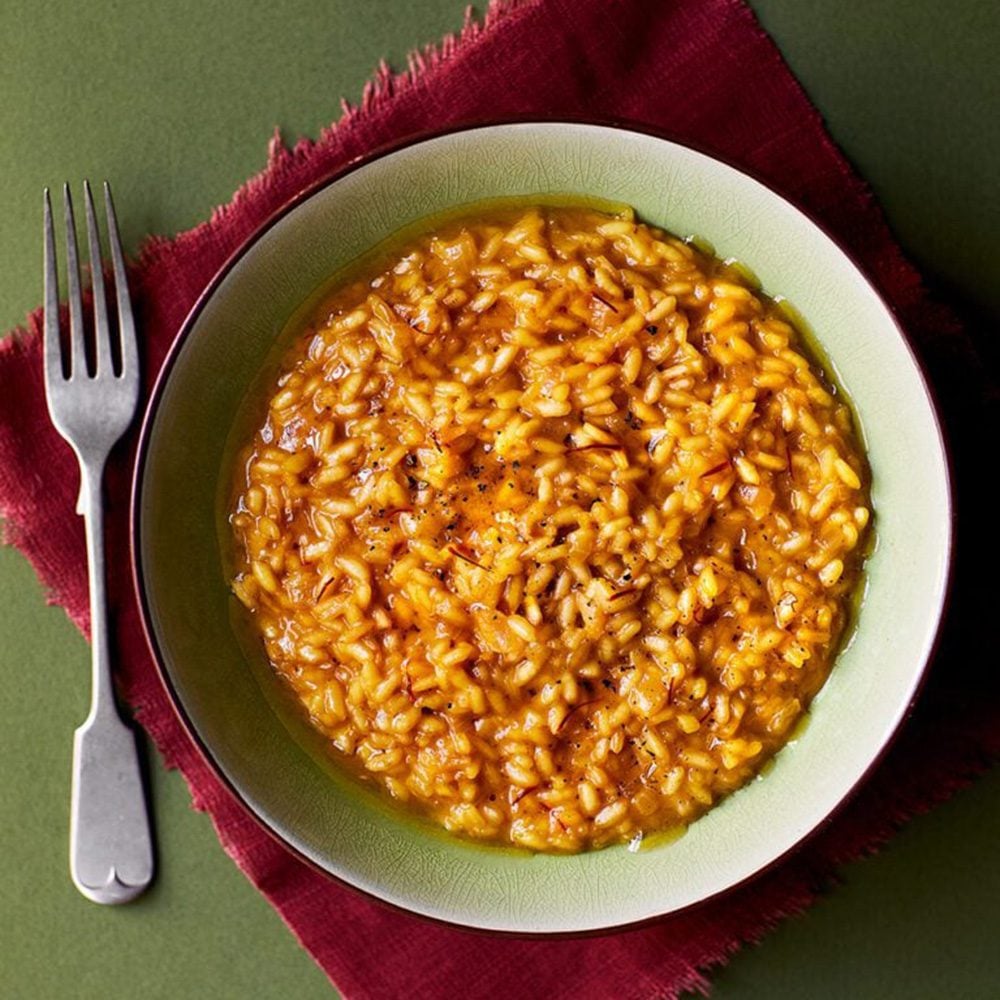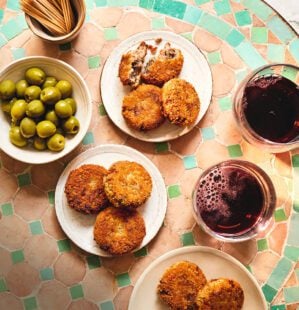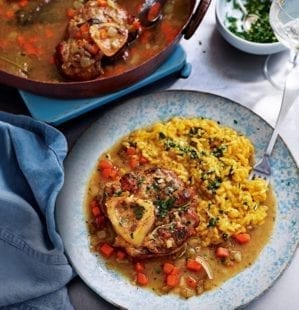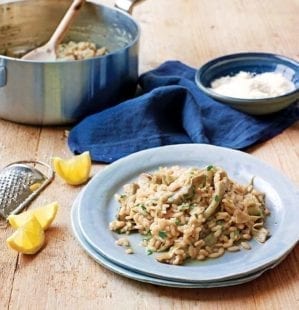Best of the best: how to make the ultimate risotto alla milanese
Learn how to make the ultimate risotto alla milanese with our in-depth guide. Sunshine-yellow rice, heady with saffron and rich with bone marrow… This simple risotto from Lombardy is one of the greatest Italian dishes of all time.
Our best of the best series takes the view that if something’s worth doing, it’s worth doing well. We take a classic dish, delve into the processes and analyse why it tastes so good – then we share our ultimate recipe. This time: Pollyanna Coupland is stirred into action by an Italian icon, risotto alla milanese…
Read our full guide to the food of Lombardy, including its other star dishes.

You’ve no doubt made a risotto before – it’s one of those go-to dishes that rely on a handful of simple ingredients, then whatever meat, fish or veg you have to hand. On balance, though, there are probably more bad risottos out there than good ones. A lot can go wrong: poor stock leaves it flavourless; not enough stirring means unevenly cooked grains; overcooking will leave you with a stodgy porridge.
That’s why risotto alla milanese – one of the simplest risotto dishes out there – is the perfect recipe to hone your skills. Flavoured with saffron and bone marrow, it has no chunks of meat or fish to distract from the perfectly cooked rice. Its vibrant colour is always a showstopper and, even without its usual accompaniment of ossobuco (a veal shank stew), it’s one of the most satisfying dishes to master.
Three steps to the perfect risotto
There are three important elements to a great risotto alla milanese: your kit, your ingredients and your technique…
Step one: Good kit
The pan Use a high-sided frying pan or, even better, a large saucier pan (a sort of shallow saucepan with curved sides, which prevents grains getting stuck in the corners). A regular saucepan is too deep to allow the stock to evaporate properly and the wider the base of the pan, the easier it is to stir the risotto.
The spoon Have you ever seen a wooden spoon with a hole in the centre and wondered what it’s for? It’s called a girariso (literally ‘turn rice’) and is made especially for risotto. It’s said to double the effectiveness of stirring, as the rice brushes up against itself in different directions as it passes through the holes. It’s also less likely to break the grains. While I wouldn’t call it essential – a wooden spoon or sturdy spatula will do the job – if you happen to have a girariso languishing in a drawer, now’s the time to use it.
Step two: Top ingredients
Rice The two main Italian risotto rice varieties available in the UK are carnaroli and arborio. Arborio is the more common and slightly cheaper of the two. It has a higher starch content, which makes it perfect for creating that creamy texture, but that same starch also makes the rice more prone to overcooking.
Carnaroli is a slightly longer grain with less starch, which holds its shape better during stirring. This allows you to cook it more gradually, giving you better control over the final result. That’s why I always go for carnaroli over arborio – but with proper technique you’ll get perfect creaminess regardless.
Saffron Perfumed and vibrant, saffron is the most expensive spice because it has to be harvested by hand and each flower produces so little (it’s the stigmas of the saffron crocus). As such, like other costly goods, there’s plenty of counterfeit saffron about. To check yours is the real deal, put a strand or two in cold water, then rub between your fingers – they shouldn’t break or disintegrate and will leave a golden hue on your skin. It grows around the world, but there are also good producers in Norfolk, Essex and Devon.
Bone marrow While the yellow vibrancy indicates saffron is the main player here, it’s bone marrow that adds body to the dish. Ocado, Morrisons and Waitrose all sell bone marrow, as do most butchers – use a teaspoon to scrape it out of the halved bones and chop it up, ready to melt into the risotto.
Stock If marrow and saffron are the superstars, the silent hero is the stock – traditionally veal or beef, but chicken works a treat, too. Whichever stock you use, it’s vital that it’s top quality – which usually means homemade stock. Cubes just don’t have that same depth of flavour.
Step three: Solid technique
Keep the stock hot Hot stock will coax more starch from the grains, resulting in a creamier texture. Keep it very gently steaming away in a pan – it doesn’t need to be visibly simmering. Heat a little more stock than you think you’ll need. Small differences, such as how old the rice is and how hot your heat source is, mean it’s not an exact science. It’s better to have a little extra stock left over than to run out and have to add cold water.
Toast the dry rice for a few minutes This is important before you add the liquid because it creates a crust around each grain, allowing it to slowly absorb moisture without getting mushy. It also adds a slightly nutty flavour.
Add the stock patiently Add it a ladleful at a time, then wait until it’s been absorbed before adding another. If you drown the grains in liquid there’s less friction between the grains as you stir, meaning less starch will be released.
Don’t shirk the stirring It’s a myth that you need to stir your risotto non-stop for the entire process, but generally, the more you stir, the creamier the risotto will be (as the motion means the grains rub together, releasing their starch into the stock). Professional risotto chefs toss the pan so the mixture flies into the air, slapping back into the pan to create even more motion (this is known as all’onda, or ‘on the wave’). What you don’t want is to let the risotto catch on the bottom, so don’t walk away from the pan – enjoy the therapeutic nature of the dish coming together!
Add the saffron at the right time for you Saffron can be a bit of an overpowering flavour to some, and the point at which you add it determines how strong the flavour will be. I like to add the saffron right at the end for quite a strong, floral kick, but if you prefer a mellower flavour, add it halfway through the process.
Finish it well This is the most important bit. Once the rice is cooked to your liking – it should have a little bite to it, but not be crunchy or powdery – add a final ladle of stock, then take it off the heat and beat in the butter and cheese. Risotto is all too often served like a porridge because it thickens as it cools, so that final ladle of stock ensures it stays nice and loose.
And finally… Let it rest! Cover and let the rice relax. Serving it on warm plates is also key as it slows the cooling process, preventing stodginess.
Ready to cook? Make our best of best risotto alla milanese recipe. Plus, browse the complete best-of-the-best collection, including ratatouille, lasagne and French onion soup.
Subscribe to our magazine
Food stories, skills and tested recipes, straight to your door... Enjoy 5 issues for just £5 with our special introductory offer.
Subscribe
Unleash your inner chef
Looking for inspiration? Receive the latest recipes with our newsletter






